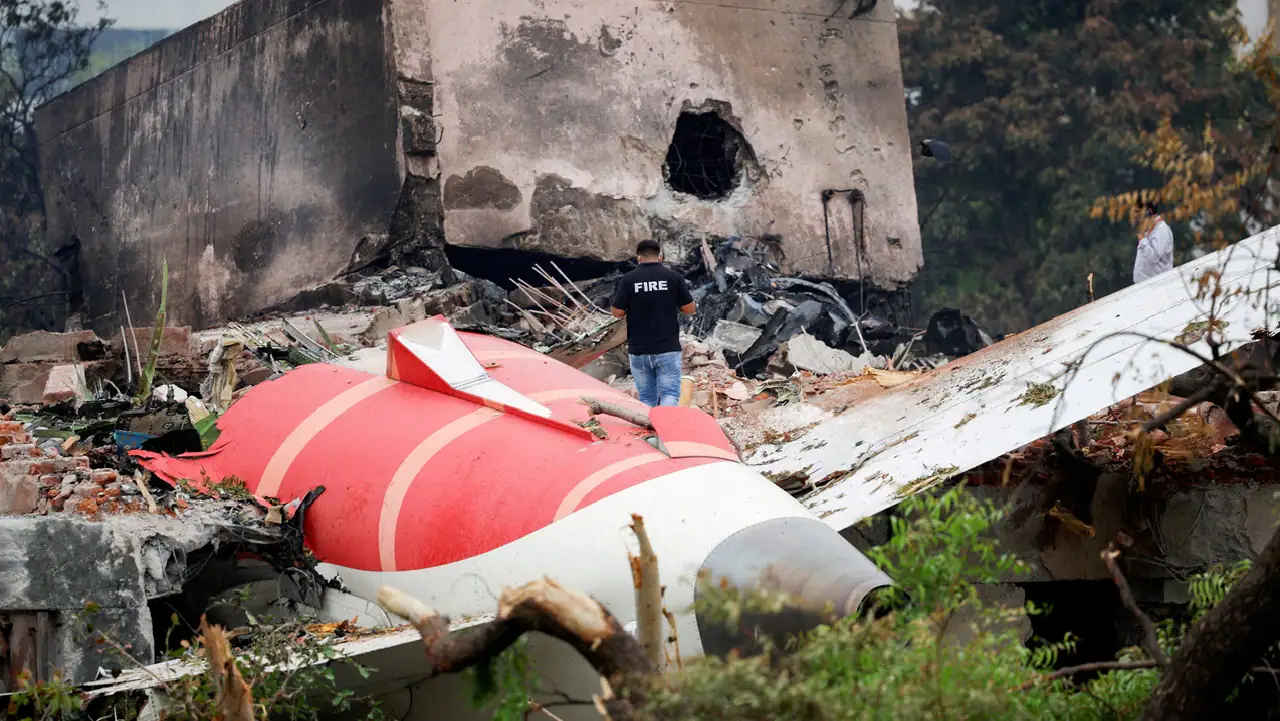
Investigators look back at the Gatwick incident in 2020 for possible clues behind Air India crash
How did your country report this? Share your view in the comments.
Diverging Reports Breakdown
Investigators look back at the Gatwick incident in 2020 for possible clues behind Air India crash
The Air India plane crashed near the Ahmedabad airport just after taking off on June 12. Initial inspections of the wreckage led to the conclusion that the aircraft lost power in its main electric system just seconds after takeoff. Initial findings indicate no cockpit error; the pilots may have attempted to regain control after a power failure immediately after takeoff, as the aircraft failed to reach a safe altitude. The Boeing 787 has a backup manual control system, but the plane lacked the altitude to safely glide down. The black boxes and DVR from the Dreamliner crash have been recovered but are damaged, complicating file extraction. Authorities are considering sending them to the US for assistance from the NTSB. The UK Air Accidents Investigation Branch (AAIB) team is comparing this incident with findings from a similar event that occurred at Gatwick in February 2020.
Investigators probing the ill-fated Air India flight AI-171 from Ahmedabad to London, which crashed minutes after takeoff and killed over 260 people, are taking a closer look at a similar incident that took place in February 2020 involving an Airbus A321 in Gatwick, reported the Indian Express.
In both incidents, the aircraft’s engines malfunctioned immediately after takeoff, leading to a mayday call. Following the declaration of a mayday, the flight crew completed a return and landed back at Gatwick 11 minutes later.
Story continues below Advertisement Remove Ad
The UK Air Accident Investigation Branch (AIIB), the same branch probing the Air India crash, found that the reason for engine failure was fuel system contamination in the 202 investigation, even though engineers had found no fault prior to clearing it for flying that night.
Authorities investigating the crash in Ahmedabad are conducting a thorough examination of the technical logs for flight AI-171 from the 24 hours before the incident. Preliminary observations, based on visual evidence and the wreckage, suggest that the flight experienced a power failure.
The report quoted an officer saying that the investigation agencies have reviewed statements from Ahmedabad Air Traffic Control (ATC) controllers and maintenance engineers who cleared the flight for departure. Initial inspections of the wreckage led to the conclusion that the aircraft lost power in its main electric system just seconds after takeoff.
“The material evidence, which includes the wreckage and the videos of the takeoff as well as the crash, indicates a definite power failure on the flight,” the officer said. “The cause will be known only when the black box data is recovered but we can estimate that since the flight was in a takeoff and its nose pitched up for the liftoff, the deployment of the Ram Air Turbine (RAT) could not help the flight make a safe turnaround as it had not even achieved the minimum altitude of 3600 feet for a safe path.”
The black boxes and DVR from the Dreamliner crash have been recovered but are damaged, complicating file extraction. Authorities are considering sending them to the US for assistance from the NTSB. Initial findings indicate no cockpit error; the pilots may have attempted to regain control after a power failure immediately after takeoff, as the aircraft failed to reach a safe altitude. The Boeing 787 has a backup manual control system, but the plane lacked the altitude to safely glide down. It crashed into a medical hostel building from just 625 feet.
The officer stated that, in investigating the cause of the engine failure, one of the most critical aspects would be to analyse the aircraft’s technical log for the previous 24 to 48 hours. This would help determine if any technical abnormalities were noted by the previous captains or maintenance staff.
Story continues below Advertisement Remove Ad
The UK Air Accidents Investigation Branch (AAIB) team is comparing this incident with findings from a similar event that occurred at Gatwick in February 2020. “The entire flight duration was 11 minutes, according to the UK AAIB investigation. The incidents were quite similar; however, the flight managed to reach an altitude of approximately 3,580 feet and was able to make a safe landing after declaring a Mayday three times. The investigation concluded that the cause of the engine failure was fuel system contamination, even though engineers found no faults before approving the aircraft for that night’s flight,” the officer explained.
“Additionally, that investigation revealed that the three flights completed prior to the Gatwick takeoff exhibited unusual signs from one of the engines, as it required multiple attempts to start. It also relayed stalling messages during the flight. Ultimately, it was discovered that the engineers who cleared the flight from Gatwick had not conducted a thorough examination of the engine, which led to the ‘no fault’ finding,” the express report said, citing an officer.
